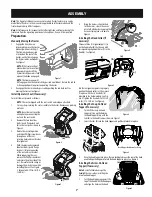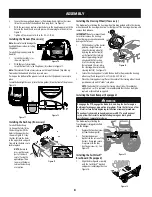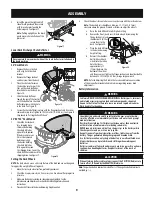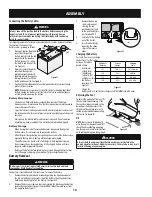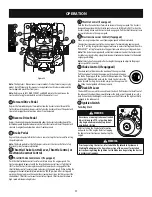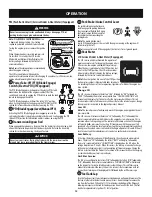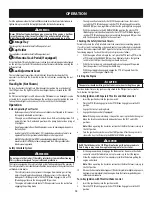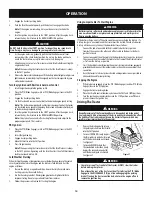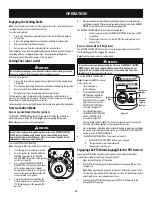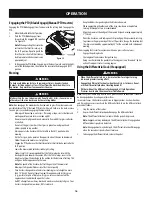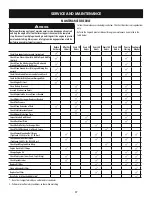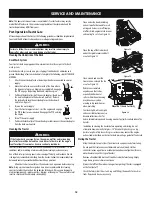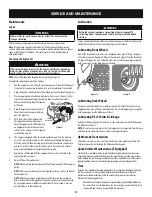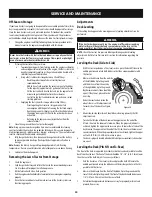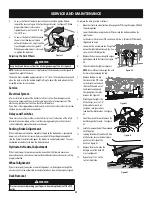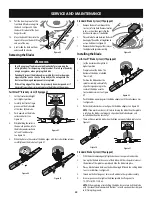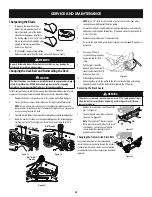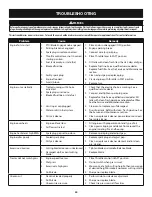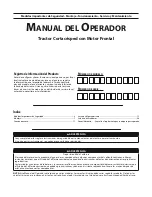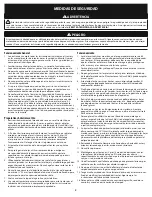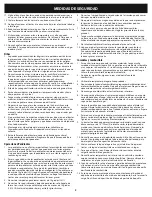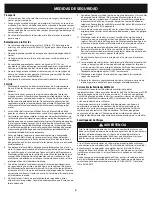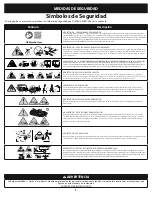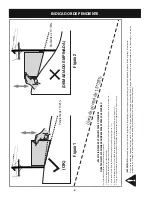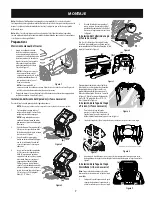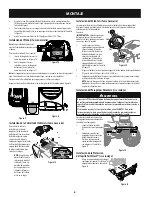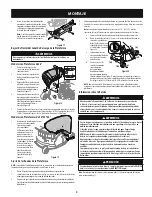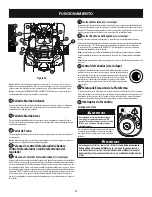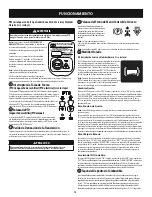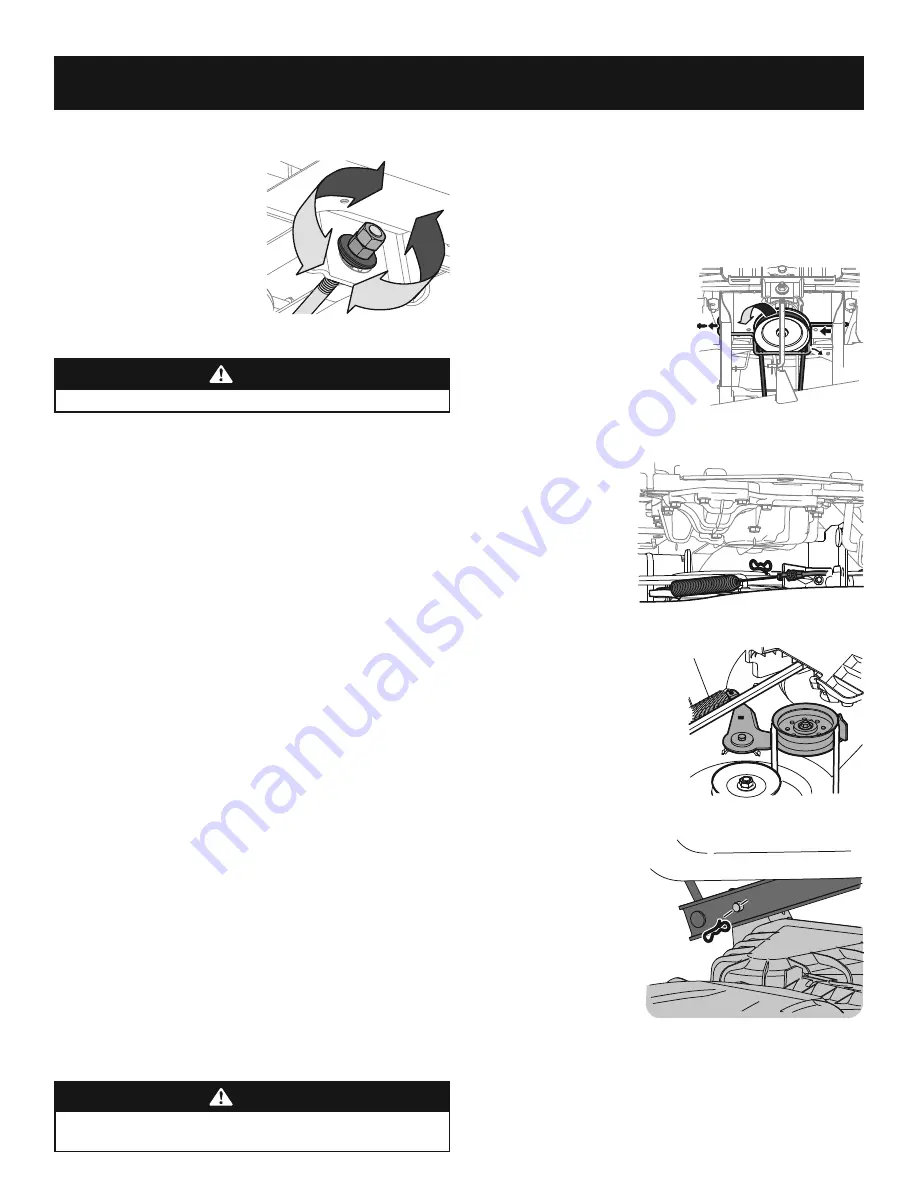
21
SERVICE AND MAINTENANCE
To remove the deck, proceed as follows:
1.
Move the tractor to a level surface, disengage the PTO, stop the engine, ENGAGE
the parking brake.
2.
Lower the deck by moving the deck lift lever into the bottom notch on the
right fender.
3.
For tractors with a manual PTO continue with step 4, for electric PTO models
skip ahead to step 8.
4.
Loosen, but do not remove the flange lock
nut on the right idler pulley and the hex
screw on the left idler pulley.
5.
Remove the hex screw securing the engine
pulley keeper rod to the frame. See Figure
40.
6.
Slide the rod to the right to remove it.
NOTE:
Be careful not to damage the wire
harness when removing the rod.
7.
Remove the bow tie clip
that secures the PTO cable
to the bracket on the deck,
slide the PTO cable out of
the bracket and unhook
the spring from the idler
bracket. See Figure 41.
8.
Working on the right side
of the tractor, insert a 3⁄8”
drive ratchet wrench, set
to
tighten
, into square hole
found on the idler bracket. See Figure
42.
9.
Pivot the wrench forward to move the
deck drive pulley forward. See Figure
42.
10.
Carefully remove the belt from around
the PTO pulley.
11.
Looking at the deck from the left side
of the tractor, locate the bow-tie pin
on the rear left side of the
deck. See Figure 43.
12.
Remove the pin and slide the
deck pin out of the deck lift
arm. See Figure 43.
13.
Repeat steps 11-12 on the
tractor’s right side.
Figure 40
Figure 41
Figure 42
Figure 43
4. To
raise
the front of the deck, loosen the outer nut then tighten (thread
inward) the inner nut against the front hanger bracket. See Figure 39. When
proper adjustment is achieved, re-
tighten the outer nut to 25-30 ft.-lbs
(34-40.7 N-m).
5. To
lower
the front of the deck, loosen
the outer nut then loosen (thread
outward) the inner nut, away from the
front hanger bracket. See Figure 39.
When proper adjustment is achieved,
re-tighten the outer nut.
Adjusting the Deck Wheels
WARNING
Keep hands and feet away from the discharge opening of the cutting deck.
NOTE:
The deck wheels are an anti-scalp feature of the deck and are not designed to
support the weight of the deck.
The deck wheels should be approximately 1⁄4-1⁄2” (6.35-12.7mm) above the ground
when the deck is set in the desired height setting. To adjust the deck wheels see the
Assembly section for instructions.
Service
Electrical System
A fuse is installed to protect the tractor’s electrical system from damage caused
by excessive amperage. Always use the same capacity fuse for replacement. If the
electrical system does not function, check for a blown fuse.
If you have a recurring problem with blown fuses, have the tractor’s electrical system
checked by your authorized service dealer.
Relays and Switches
There are several safety switches in the electrical system. If a function of the safety
interlock system described earlier is not functioning properly, have the electrical
system checked by your authorized service dealer.
Parking Brake Adjustment
If the tractor does not come to a complete stop when the brake pedal is completely
depressed, or if the tractor’s rear wheels can roll with the parking brake applied
(and the hydrostatic relief valve open), the brake is in need of adjustment. See your
authorized service dealer to have the brake adjusted.
Hydrostatic Neutral Adjustment
If the tractor creeps forward or rearward when neither the forward nor reverse
pedal is depressed, contact your local authorized dealer to have the neutral setting
properly adjusted.
Wheel Alignment
If your tractor pulls to one side or is out of alignment, a wheel alignment might be
necessary. Contact an authorized service dealer to have the wheels properly aligned.
Deck Removal
WARNING
Use caution to avoid pinching your fingers when rolling the belt off the PTO
pulley.
Figure 39

